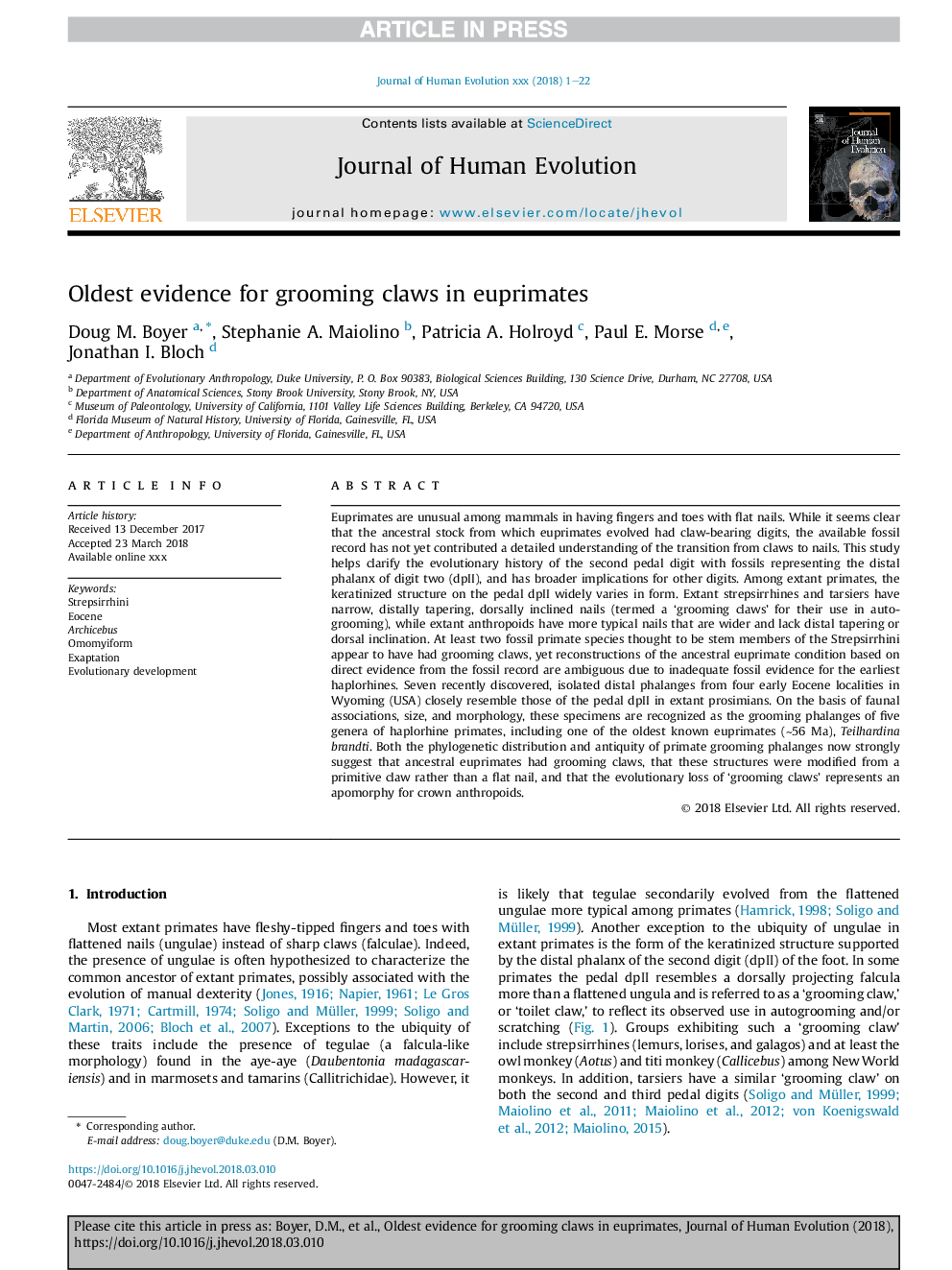| کد مقاله | کد نشریه | سال انتشار | مقاله انگلیسی | نسخه تمام متن |
|---|---|---|---|---|
| 8887174 | 1628127 | 2018 | 22 صفحه PDF | دانلود رایگان |
عنوان انگلیسی مقاله ISI
Oldest evidence for grooming claws in euprimates
ترجمه فارسی عنوان
قدیمی ترین شواهد برای چنگ زدن به گربه
دانلود مقاله + سفارش ترجمه
دانلود مقاله ISI انگلیسی
رایگان برای ایرانیان
موضوعات مرتبط
علوم زیستی و بیوفناوری
علوم کشاورزی و بیولوژیک
بوم شناسی، تکامل، رفتار و سامانه شناسی
چکیده انگلیسی
Euprimates are unusual among mammals in having fingers and toes with flat nails. While it seems clear that the ancestral stock from which euprimates evolved had claw-bearing digits, the available fossil record has not yet contributed a detailed understanding of the transition from claws to nails. This study helps clarify the evolutionary history of the second pedal digit with fossils representing the distal phalanx of digit two (dpII), and has broader implications for other digits. Among extant primates, the keratinized structure on the pedal dpII widely varies in form. Extant strepsirrhines and tarsiers have narrow, distally tapering, dorsally inclined nails (termed a 'grooming claws' for their use in autogrooming), while extant anthropoids have more typical nails that are wider and lack distal tapering or dorsal inclination. At least two fossil primate species thought to be stem members of the Strepsirrhini appear to have had grooming claws, yet reconstructions of the ancestral euprimate condition based on direct evidence from the fossil record are ambiguous due to inadequate fossil evidence for the earliest haplorhines. Seven recently discovered, isolated distal phalanges from four early Eocene localities in Wyoming (USA) closely resemble those of the pedal dpII in extant prosimians. On the basis of faunal associations, size, and morphology, these specimens are recognized as the grooming phalanges of five genera of haplorhine primates, including one of the oldest known euprimates (â¼56Â Ma), Teilhardina brandti. Both the phylogenetic distribution and antiquity of primate grooming phalanges now strongly suggest that ancestral euprimates had grooming claws, that these structures were modified from a primitive claw rather than a flat nail, and that the evolutionary loss of 'grooming claws' represents an apomorphy for crown anthropoids.
ناشر
Database: Elsevier - ScienceDirect (ساینس دایرکت)
Journal: Journal of Human Evolution - Volume 122, September 2018, Pages 1-22
Journal: Journal of Human Evolution - Volume 122, September 2018, Pages 1-22
نویسندگان
Doug M. Boyer, Stephanie A. Maiolino, Patricia A. Holroyd, Paul E. Morse, Jonathan I. Bloch,
